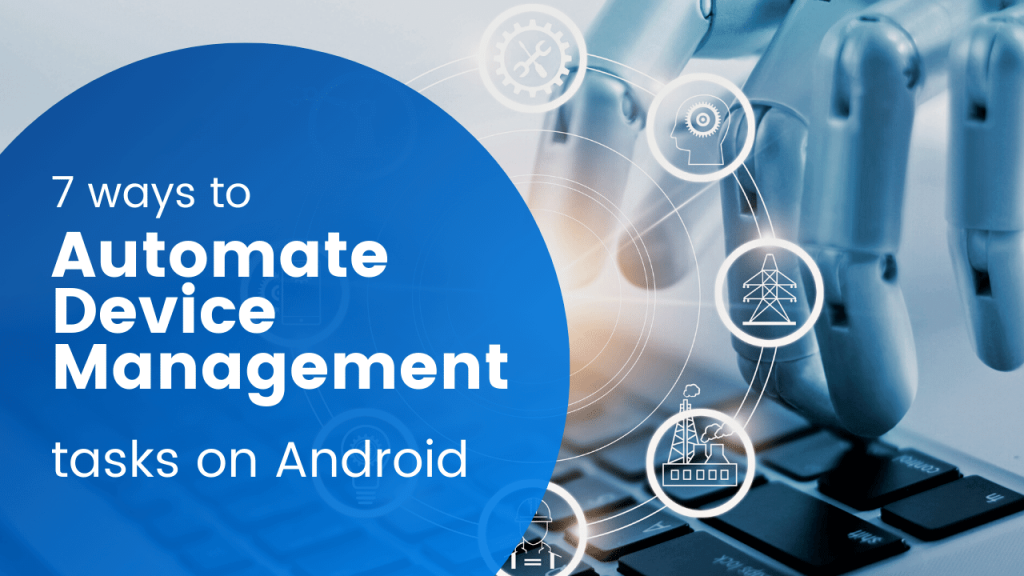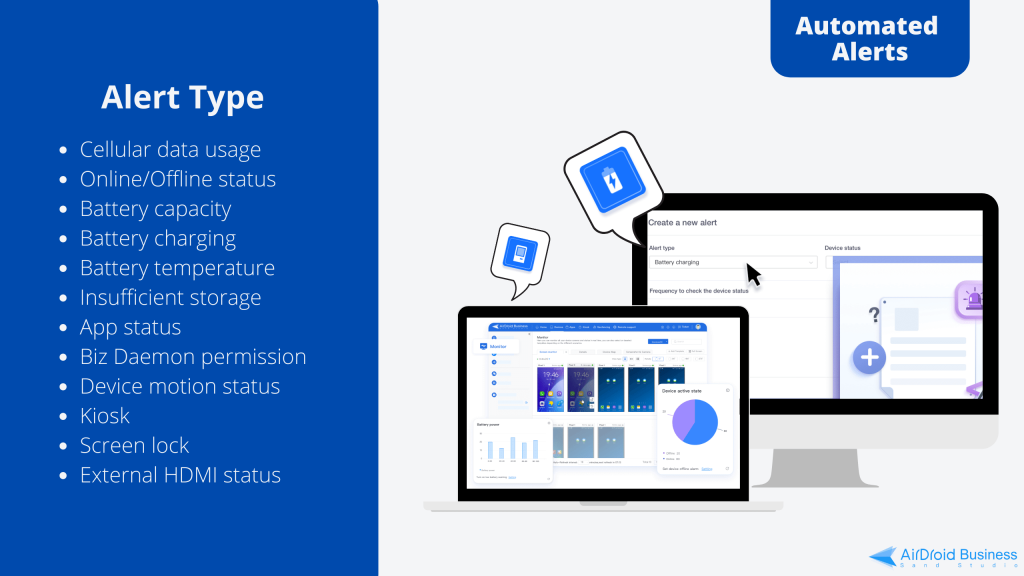Last Updated on October 13, 2022

The growing adoption of Android devices is forcing organizations to seek solutions for efficient device management workflows and reduced IT workloads. One effective method is through automation, which is a critical feature of Mobile Device Management (MDM) software.
Organizations that manage numerous devices can benefit from automated device management in three different ways:
- Save time from repetitive tasks: Businesses often need to deploy the same application or configure network settings to multiple devices. Automating these tasks will help IT admins save considerable amounts of time and focus more on improving work productivity.
- Avoid negative impact on business operations: Time spent on manually updating apps or blocking unauthorized user access can actually be invested in bettering your product quality and growing competitive advantage.
- Ensure device security with proactive approach: When cybersecurity risks are detected, you can trigger automated workflows that activate specific device management tasks to safeguard sensitive data in the first place. This is one strategic way to enhance enterprise mobility.

Here are seven ways to automate device management tasks on Android using the AirDroid Business MDM solution.
1. Foolproof Enrollment Process
Manually deploying every device can be a never-ending nightmare. Fortunately, with AirDroid Business MDM, organizations can use a Bulk-deploy version APK to automatically add devices without wasting plenty of time. After enrolling all devices, you can start managing all company-owned Android from Admin Console, the centralized dashboard for Android device management.
There are three different ways to deploy your Android with AirDroid Business MDM. The most recommended way is to take your controlled devices and scan the QR code that is exclusively created for your company.
2. Efficient User Management
Every user has designated job content that requires different data accessibility. Under such circumstances, it is strongly recommended to restrict every user’s access to particular apps, files, and services with the help of Kiosk Mode.
Organizations can also categorize employees or users into various groups and allow different app access respectively. To avoid unexpected data breach, IT admins can assign roles like Admin, Team Member, and Viewer in AirDroid Business MDM to further restrict unauthorized device configurations.
3. App Deployment and Updates on Bulk Devices
For managed devices, deploying and updating apps are crucial in fending off cybersecurity threats. Manually installing apps to a new device or updating apps on remote devices is definitely not an efficient and sustainable way to manage your Android ecosystem. AirDroid Business MDM lets you install apps on bulk devices or run automatic app updates via specified scheduling. This way, you can ensure your company-owned devices are not affected by such configurations during business hours.
In order to prevent complete device breakdown, IT admins can also run various app tests on several devices before deploying them officially using the AirDroid Business Application Management Services.
4. Configured Network on Android devices
Unauthorized access from outside the organization’s network can often lead to disastrous data leak. Hence, IT admins should create network policies that restrict devices from connecting to public WiFi or prevent users from visiting malicious websites. By implementing AirDroid Business MDM, you can set up various kiosk profiles and automatically apply these network configurations to different Android device groups.
With the help of Website Whitelist, you can rest assured that device users only have access to authorized web pages, lowering your cybersecurity risks altogether.
5. Remote Monitoring and Automated Android Alerts
It is important for businesses to keep track of every device’s performance. For organizations managing remote Android devices, they can utilize the Alert feature in AirDroid Business MDM to receive automated alerts for abnormal activities. You can get email notifications for low battery levels, surging data usage, connection loss, and more.
With these automated alerts in place, IT admins take on a proactive approach towards device management on Android, further reducing maintenance costs and increasing productivity simultaneously.

Source: AirDroid Business
6. Auto-trigger Security Measures
Automation in device management can prevent disastrous data loss in the first place. If your company-owned device is lost or stolen, businesses can enable remote lock or data wipe on the device. With AirDroid Business MDM, you can even design a workflow to automatically trigger data protection tasks and protect your enterprise data from being accessed by outsiders.
Since MDM allows companies to track device locations, IT admins can set up digital parameters, also known as geofences to always keep a tab on their remote devices. Therefore, if the system detects that a device is exiting the predefined geofence, it can automatically trigger some safety motions to protect your company’s sensitive data.
7. Ensure compliance across all devices
Device compliances vary based on how businesses are operated in different industries. As your businesses expand, you should make device enrollment as swiftly as possible. You should also ensure that all devices are compliant with company policies and security regulations to reduce tedious administrative work. AirDroid Business MDM lets you automatically enforce configured profiles like single app mode or passcode encryption on your selected device or device groups easily from the Admin Console.
As more companies are switching towards a mobile-first workforce, automating device management tasks will be a great competitive advantage for companies to reduce IT workload. Using the right MDM solution to streamline your device management workflows is more critical than ever. When you can replace once-complicated device management tasks like network security, app updates, and device deployment with efficient automation, you are actually establishing stronger enterprise mobility that will definitely sustain long-term growth for your company.